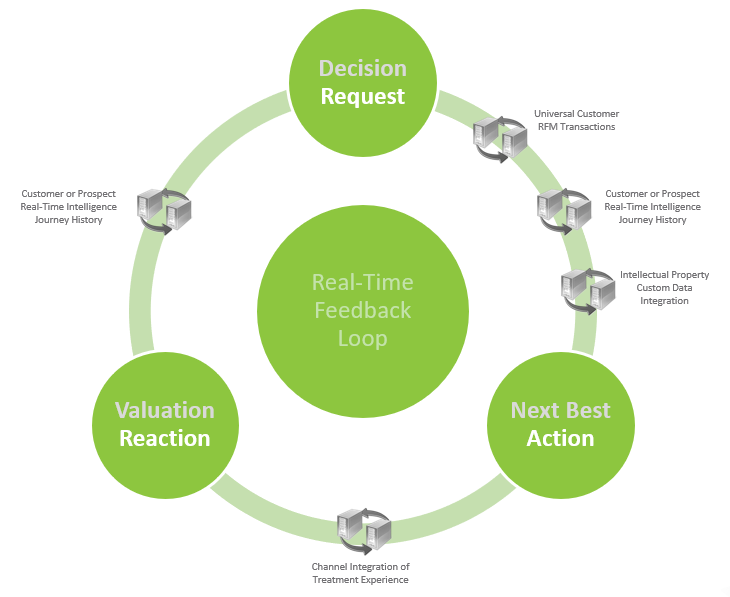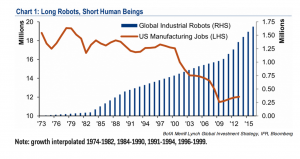It’s difficult to find anything positive from a global pandemic, however the re-emergence of the value of a human life in the modern world of technology may be an exception. The entire planet is now collectively re-evaluating our share scarcity of time, in relation of when is the appropriate time to terminate the stay in place \ quarantines designed to decrease risk of death (time) from human biological interaction. This re-evaluation will be challenged by the SARS-CoV-2 (COVID19) pandemic’s economic impact upon supplier markets supporting the goods and services demanded by consumers (who also happen to be humans). A re-evaluation of the value of time from a human perspective, is a radical change from the pre-pandemic concern of a pending Armageddon from artificial intelligence robots replacing employees in all industries across the globe. As now society is worried there may be fewer people in the future to potentially consume the goods and services produced from robotics driven by artificial intelligence.
The pandemic has NOT impacted technology distribution business models, despite the future headwinds from GDPR upon global digital economy, as there has been a continued effort to promote the benefits of monitoring humans by gathering more real-time data (Google\Apple COVID19 Contact Tracing, Facebook COVID19 Data Maps, MIT COVID Tracer Tracker, etc.) via free distribution of tech apps in effort to combat the pandemic. I have NOT been shy in sharing my views on Linkedin or Twitter regarding risks from executing pandemic event driven brand advertising or sales promotions (versus focusing resources upon supporting operational communications and saving marketing war chest for the future heavy lifting needed to re-produce demand in market), or the uselessness of collecting more real-time data without a feedback loop to support the consumer’s demanded outcomes. In this case reducing health risks in the short-term within their daily lives to procure essential goods and services, as well as potentially extending (long-term) their time on earth with family and friends.
This is a unique opportunity for society to re-evaluate the potential of artificial intelligence to improve human outcomes (versus replace), which could be enhanced from integrative theory amalgamation within real-time feedback loops. Why? This integrated approach

could support the pandemic’s increased risk and subsequent declining valuation of human biological interaction, but conversely lessen the economic impact by using technology to support interactions needed between people in the procurement of goods and services demanded in the supplier market.
By leveraging Integrative Negotiation Theory to strategically focus on developing mutually beneficial agreements based on the interests (needs, desires, concerns, and fears) important to each party in the market (or in the ‘baking of the pie’). ‘Integrative’ refers to the potential for the parties’ interests to be combined in ways that create joint value or ‘enlarge the pie’ (market). Potential for integration only exists when there are multiple decision factors involved in the negotiation, as parties must be able to make trade-offs in order for both sides to be satisfied with the real-time decision outcome.
An effective integrative theory feedback loop can even support complicated emotional decisions. To better understand the conceptual application, I would recommend you rent\watch the modern movie Crazy Rich Asians. The final scene demonstrates how a
series of prior feedback loop interactions are utilized in real-time to finally determine an emotional decisioning process to satisfy the conditions of the many parties involved. The fundamental principal is she never compromises her values of what she is seeking from a relationship. She effectively weights the learned valuation of the needs, desires, concerns, and fears of her lover and his mother to focus decision upon their shared values. Then she efficaciously establishes trade-off options, so all parties may satisfy their needs for sustaining and scaling a purposeful and fulfilling relationship.
For a practical and simple integrative theory decision application example, let’s take a look at a daily life need of humans to eat and drink in order to sustain their health via nutrients. Many restaurants continue to support consumer demand by using tech apps to process carry-out order transactions with the mobile phone serving as the artificial intelligence interaction device. This has enabled these businesses to overcome some of the health risks from traditional call-in or point of service order payment at counter between humans. However, they are still addressing challenges to reduce the risks from picking up the order, as currently their interaction device (mobile phone app) solution only supports processing payments for orders.
There is still a significant service gap in satisfying all of the purchasing decision inputs, which may impact consumer demand as the world ends their voluntary stay at home \ quarantine. Potentially the order pick-up service gap risk may have already been solved by the supply-chain logistics industry decades ago in their adoption of RFID technology, which may be applied via a feedback loop upon arrival to support processing needed to reduce health risks from human biological interaction in the market. There’s potential for this conceptual application in many industries, as It has proven difficult for service industries to completely reduce risks from human interaction at the point of service. Even Amazon fails to eliminate human biological interaction health risks from procurement of goods, as their final point of service many times is a single-family residency or multi-dwelling unit residency in a city.
If you are going to attempt to leverage artificial intelligence interaction devices to improve your ability to support goods and services demanded when risks exist in the market exchange (e.g., during a pandemic, flooding, war, hurricanes, earthquakes, tornados, etc.), do NOT sell the soul of your consumer to a 3rd party technology app and potentially eliminate your ability to sustain and scale relationship. I also strongly recommend you approach the real-time interactive feedback loop architecture and (artificial) decision formulas with relevance and reverence – so much so, I would suggest you take a spiritual point of view versus an economic instrument or metric POV when determining feedback loop intelligence decisions.
I believe if you do NOT weight the importance of health and risk (time) from a human experience perspective to establish trust via shared values, you may do more harm than good to your businesses ability to service demand in the market in the long-term (time). The irony of the current (pandemic) situation, is you must invest time in the short-term to procure goods and services in order to sustain your health over the long-term. Hopefully from this shared experience, humanity and their machines can begin to balance the valuation of time and health to shape the future economic instruments and market exchanges to sustain mankind.

About the author: Rod Cain is a strategic planning and direct marketing practitioner who enjoys integrating customer relationship management programs across multiple sales channels. To learn more visit rodcain.com
I am dedicating this blog article to Sprocket Cain (RIP May 18th, 2020). You needed a home and we needed to remedy the pain in our soul from the passing of Padraig. Thank you for choosing us to complete your journey on this wonderful blue planet. God speed my adventure loving friend and thank you for mentoring your little brother – Is féidir an tsíocháin a bheith in éineacht leat.
References \ Footnotes:
Wired, Harnessing the Power of Feedback Loops, https://www.wired.com/2011/06/ff_feedbackloop/
Bloomberg, Google Apple COVID-19 Tracking Tech Faces EU Security,https://www.bloomberg.com/news/articles/2020-04-16/google-apple-covid-19-tracking-tech-faces-eu-scrutiny
MIT Technology Center, A flood of coronavirus apps are tracking us. Now it’s time to keep track of them, https://www.technologyreview.com/2020/05/07/1000961/launching-mittr-covid-tracing-tracker/
Tech Crunch, Facebook launches COVID-19 data maps for the US, will take its symptom tracking efforts global, https://techcrunch.com/2020/04/20/facebooks-covid-19-survery-cmu-delphi-google/
Chicago Booth Rustandy Center for Social Sector Innovation, Week 3 and 4: Labor Market Impacts of COVID-19 on Businesses: Update with HomeBase Data Through April 25, https://www.chicagobooth.edu/research/rustandy/blog/2020/week-3-and-4-labor-market-impacts-from-covid19
Harvard, Integrative Theory, https://www.pon.harvard.edu/daily/negotiation-skills-daily/find-more-value-at-the-bargaining-table/
European Union Commission, The Complete Guide to GDPR Compliance, https://gdpr.eu/R
IEEE, Real-Time Technology Applications and Systems Resources – Click for IEEE Standards
Forbes, Apple and Google Launch First Phase of COVID-19 Contact Tracing – Will Americans Use It?, https://www.forbes.com/sites/rebeccabellan/2020/04/30/apple-and-google-launch-first-phase-of-covid-19-contact-tracing-will-americans-use-it/#471eb9fd60ae
RFID Journal, The History of RFID Technology, https://www.rfidjournal.com/the-history-of-rfid-technology
Logistics Management, The RFID market is showing signs of steady growth as companies work to achieve a meaningful return on investment in specific areas of given processes, https://www.logisticsmgmt.com/article/rfid_and_the_supply_chain_measured_progress
Logistics Middle East, The market value of RFID is expected to rise to more than $27 billion by 2024 and reader technology is becoming cheaper, https://www.logisticsmiddleeast.com/article-12080-anlysis-rfid-technology-in-logistics-supply-chain



